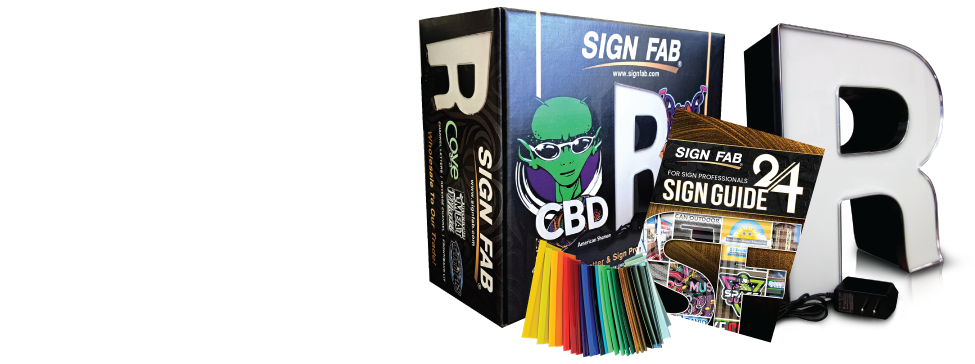This month’s tip covers the sign types we manufacture and some terminology used among sign professionals. There are many different types of signs, but we kept this limited to what we manufacture. All sign types are listed below with an image associated with the text for better understanding.
Let us know at [email protected] if you have any suggestions or if you think we left anything out!
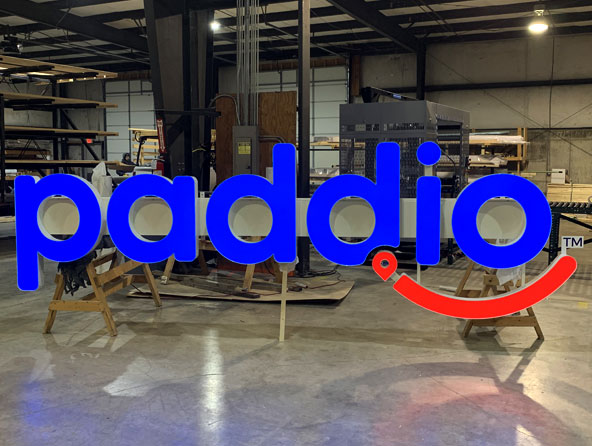
CHANNEL LETTER – Channel Letters are currently the number one choice of sign identification for business professionals. These products can be used for internal and external storefronts. We offer a complete range of channel letter products, typestyles, and custom logos. Our channel letter accessories offer you diversity, providing your customer with a wide range of options.
We can manufacture Illuminated, Preformed, Non-Illuminated and Welded products.
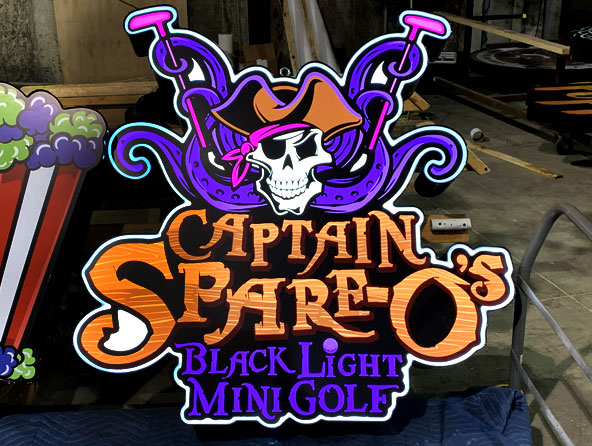
CUSTOM LOGO– This is constructed from aluminum, has an acrylic face, and is most often in the form of a custom contour logo (the shape of the can follows the shape of the logo). We can produce almost any custom logo regardless of the shape or size.
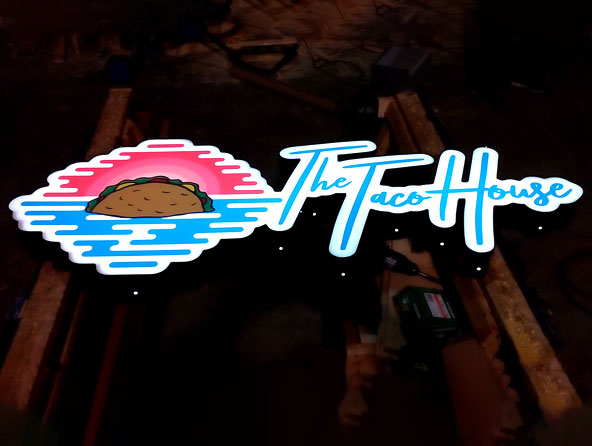
CONTOUR CHANNEL – This is almost like the standard channel letter sign, but the main difference is the letters of the sign are all on one piece of acrylic; the letters or cans are not separated. Our machines are capable of producing a large variety of contour channel signs. These types of signs can be manufactured to any shape, including standard shapes, symbols and business logos.
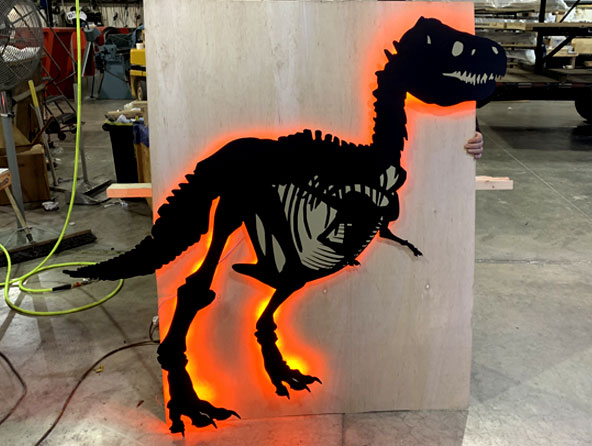
REVERSE CHANNEL – This sign features an aluminum face and return, but a clear polycarbonate back allows the lighting to create a halo effect around the letters or logos. These signs are appropriate for clients interested in architectural signage which add a sense of class and interest. They can be made into many customizable shapes.
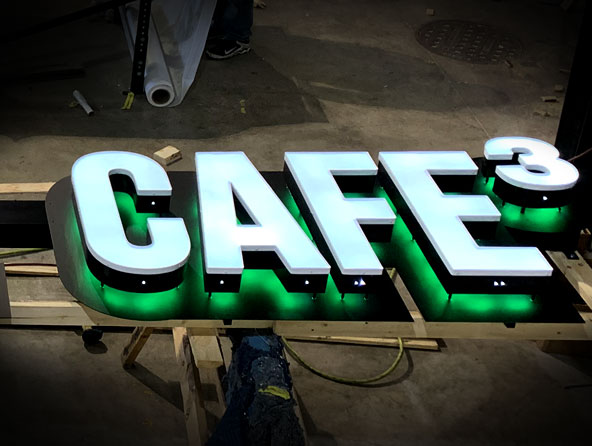
FRONT/BACK LIT – This form of sign can fall under any of the above categories, but also has light shining through the back, similar to a reverse channel sign. The face is acrylic, and the backs are typically clear polycarbonate. Two different colors of LEDs can be accomplished by adding a false back – a divider – in the can.
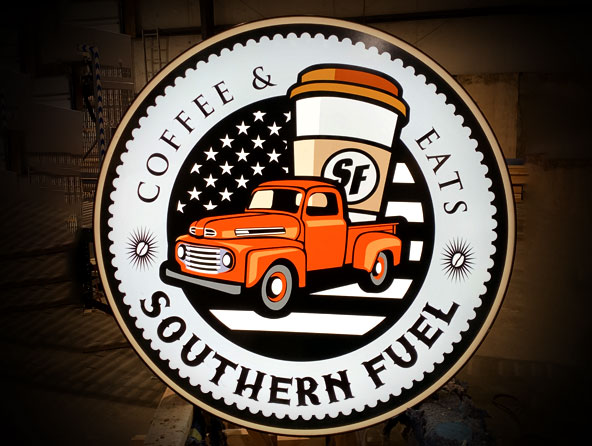
SELF-CONTAINED – Self-Contained Letters are ideal for large channel letter projects generally between 3′ and 10′. Each letter contains its own power supplies and LEDs and is pre-assembled for easy installation.

CABINET – This type of sign uses a shaped box to encase the sign. The shape may be as simple as a rectangle or as intricate as you can create. Cabinets are often double-sided and contain either square tube railing or a false back in the center of the can to illuminate both sides.
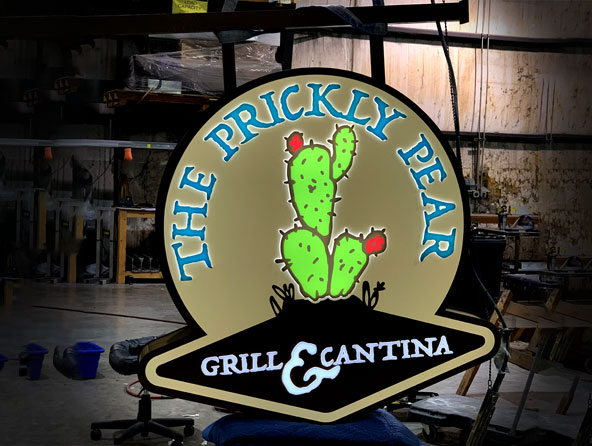
BLADE SIGN – A type of projecting sign mounted such that the face of the sign is perpendicular to the normal flow of traffic.
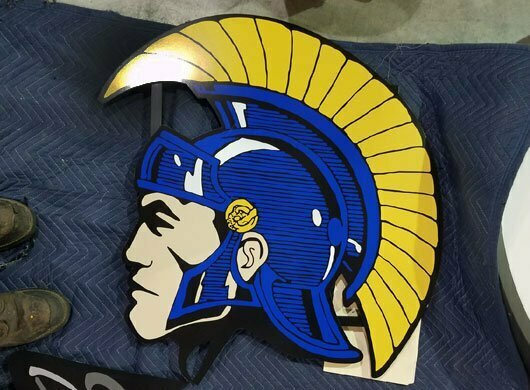
FLAT CUT – This sign can be a logo or letters. This type of sign is a non-illuminated letter or logo cut from a metal sheet or plate stock that is square tube mounted.
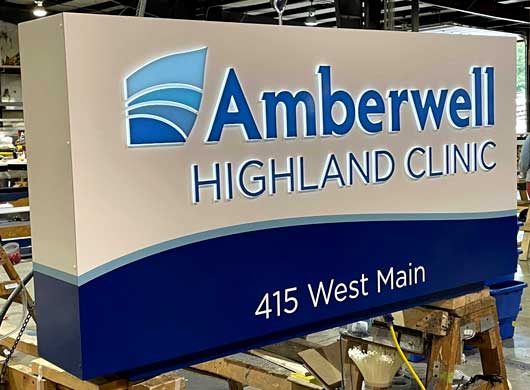
PUSH-THRU – A cabinet or capsule made from aluminum with a routed cut-out that allows for routed acrylic to push through the cut-out. This allows for a glow right around the pushed through acrylic onto the aluminum surface.
SIGN TERMINOLOGY
For a full list of all terminology used by sign professionals visit our Sign Resources page!
Access Door – A hinged or removable panel that when opened provides access to the interior of a sign allowing for the inspection and servicing of its internal components. (Also called access panel.)
Access Panel – A hinged or removable panel that when opened provides access to the interior of a sign allowing for the inspection and servicing of its internal components. (Also called access door.)
Acrylic – Type of material used to form faces.
Aluminum – A lightweight metal material used in sign panels, poles and frames. It is strong and durable in relation to its weight, and resistant to rust and corrosion.
Animated Sign – A sign that uses the sequential switching on and off of graphically arranged fluorescent lamps, cathode tubes, LEDs or incandescent so as to provide the illusion of movement.
Anodized Finish – A thin aluminum oxide coating applied electrochemically to the surface of a metal object. The coating hardens, protects and enhances the appearance of the object. An anodized finish can be created in a variety of colors.
Aspect Ratio – The width-to-height ratio of an image. For example, a high-definition television image has an aspect ratio of 1.78:1 (commonly referenced as 16:9), meaning that for every 1.78 inches of image width the image extends 1 inch in height.
Back-to-Back Sign – A sign having two faces mounted in opposite directions. Pole signs typically have back-to-back faces. (Also called a double-faced sign.)
Backlighted Letter – An illuminated reverse channel letter where the light from the letter is directed against and reflected off the surface behind the letter thereby producing a glowing effect around the letter. (Also referred to as halo lighting.)
Backlit Sign – A sign where the sign face is illuminated from behind. (Also called illuminated sign. See also internally illuminated sign and exterior illuminated sign.)
Blackout – A specially formulated paint or coating for use on electric signs to block light emission where needed, for example between letters in a neon sign. It adheres well to glass, and resists weather, heat and electrical discharge. (Also called block out.)
CAD – Computer aided design software.
CAS – Computer aided sign making
CMYK – Abbreviation for the ink colors cyan (blue), magenta (red), yellow and black. Combinations of these four colors of inks are used in printing to create all other colors.
Flex Face – A sign face made of a flexible material stretched over a supporting frame. (See also flexible face material.)
Gauge – A unit of measurement for the thickness of sheet metal or wires. The lower the gauge number the greater the thickness.
JPEG (Joint Photographic Exports Group) – A common file format for color digital images. The JPEG standard utilizes a ‘lossy’ data compression method, meaning that in order to reduce the overall size of the file a small amount of sharpness from the original image is sacrificed.
Kerning – The act of moving printed or mounted letters further apart or closer together in order to achieve a desired effect. (See also letter spacing, tracking and justified.)
Letter Spacing – A typographic term for the space between letters and words.
NEC – National Electric Code.
Occupational Safety and Health Administration (OSHA) – A U.S. federal government agency that monitors and enforces workplace safety laws.
Pre-Assembled – Includes letter, face, LED; installed – customer to complete wiring to light.
Preformed/Notched – A term used to describe a machine notching method used in the way channel letters or box signs are manufactured.
Prewired – Includes letter, face, LED; installed and wired with whip ready to install.
Raceway – An electrical enclosure that may serve as a mounting structure for a sign and is ready for primary power.
Remote – A channel letter or logo that is installed directly to fascia, no wireway included.
Resolution – 1. In digital images, the number of pixels shown on a screen; the higher the number of pixels in a given space (i.e., the greater the density of pixels), the more precise the pictured image. 2. In plotting, the degree of accuracy with which a plotter will place a knife-head in relation to a theoretical, perfect location of a coordinate.
Returns – Channel walls that make up the body of the channel.
Routed Signs – A sign created by the cutting away from a solid material such as stone or wood, where the lettering and / or design is cut down into the surface of the sign blank. Unlike hand carved pieces, routed signs generally refer to signs that are CNC routed or machine carved.
Seam – A line formed by the joining together of two separate pieces of the same or different materials at their edges, as with flexible-face fabric material or wood, metal or plastic sheet.
Specifications – May include General Requirements, Products and Execution sections for sign specification package. Similar to architectural construction format per CSI (Construction Specifications Institute) standards.
Stroke – A line forming part of a written or printed character.
Theroforming – A process that takes a flat sheet of material and gives it dimension by heating then forcing it into a mold either mechanically or pneumatically. See also vacuum-forming.
TIFF (Tagged Image File Format) – Standard graphics file format used for scanned bit-mapped images.
UL – An abbreviation for Underwriters Laboratories, Inc., a Nationally Recognized Testing Laboratory.
Weeding – The process of peeling extraneous vinyl or matrix way from a plotter cut, leaving only the sections representing the final image. Pulling the extra material away in one quick stroke is known as “rip weeding.”
As always, if you have any questions or concerns feel free to contacts us at [email protected] or 800-544-6381.
